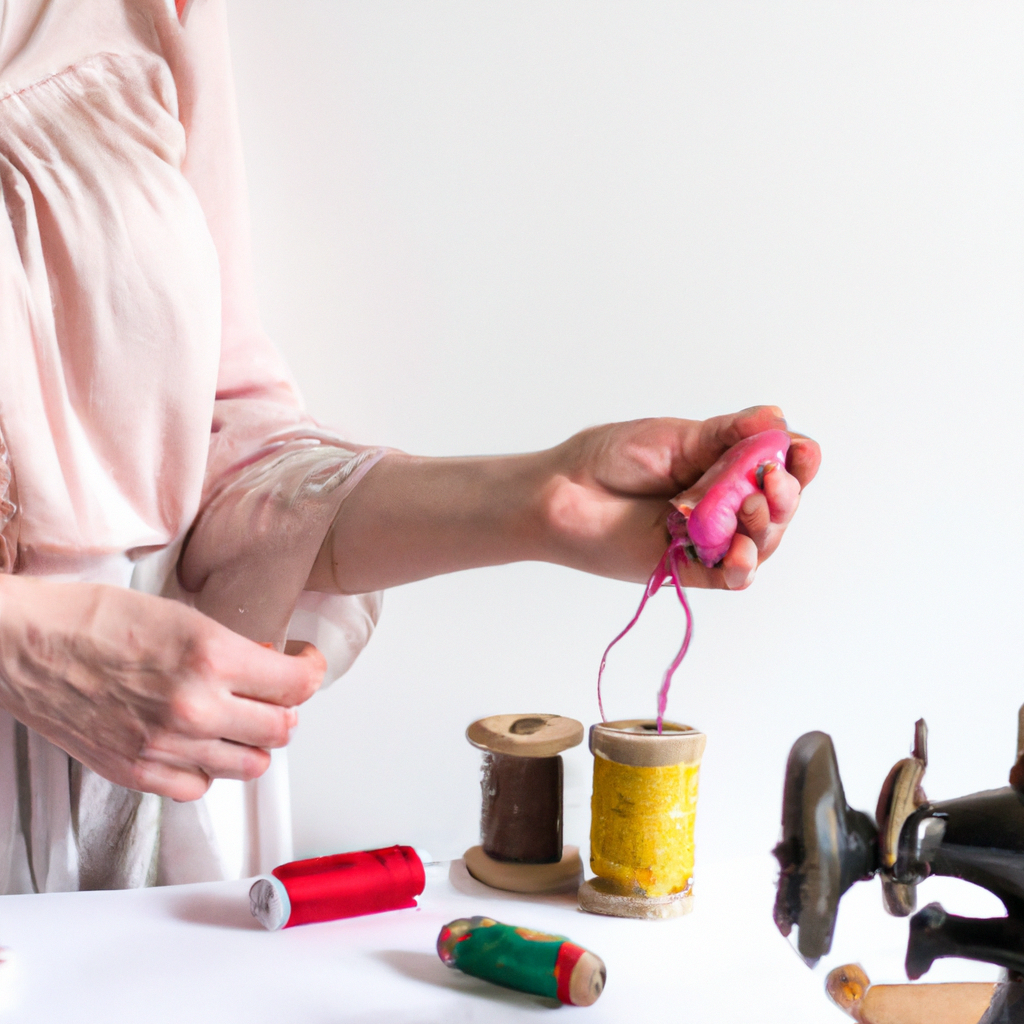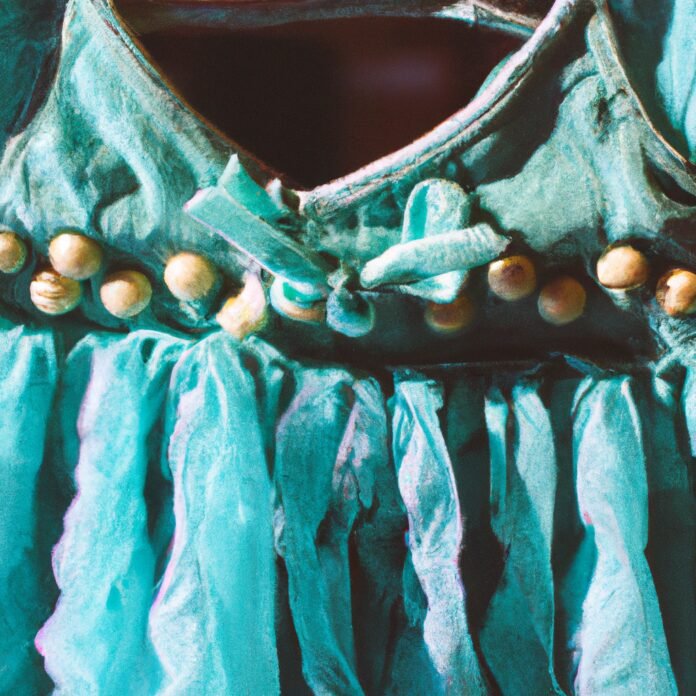Welcome to the exciting world of sustainable fashion! Do-it-yourself (DIY) couture may seem like an oxymoron, but innovative fashion creators in North America are proving us wrong. In this article, we’ll explore the inspiring world of sustainable DIY couture and how North American innovators working in this space are pushing fashion boundaries with creative and sustainable designs. Get ready for an inspiring journey into the ever-expanding world of sustainable fashion!
1. Exploring North American Innovations in Sustainable DIY Couture
North America has seen various DIY couture innovators rise to the forefront in the pursuit of sustainability. Such designers have ushered in new eco-conscious fabrics, silhouettes, and patterns to their collections. From body-hugging made-to-order knits to streamlined tailored pieces, these designers are leading the charge for conscious style.
- Natural fabrics – Some of the top innovators in the North American fashion industry are opting for natural fabrics like organic cotton, modal, and hemp that are grown without the use of toxic chemicals that harm the environment. These fabrics are soft, breathable, and have a great drape, making them perfect for wearing in any climate.
- Circular fashion – North American labels are now turning to circular fashion, which means they are creating systems of production and consumption that continually regenerate natural resources. They’re making pieces that can be altered, repaired, and resold to extend their lifecycle, helping to reduce the amount of textile waste going into landfills.
- Upcycling – DIY couture has a heavy focus on upcycling, which is the process of turning pre-loved garments into something new. Designers are creating one-of-a-kind pieces, using old denim, t-shirts, and bedsheets. They’re making sure every item is given a second life and can be incorporated into sustainable wardrobes.
- Unconventional patterns – North American fashion designers are pushing the boundaries when it comes to patterns and silhouettes. They’re using bold colors, deconstructing items, and adding unique detailing. From off-beat shapes to experimental embroideries, these designs are sure to make any wardrobe stand out.
The sustainable revolution in North American DIY couture is only just beginning. These groundbreaking ideas are challenging the fashion industry to think differently and create new, circular systems. As these DIY couture innovations continue to evolve, the possibilities for sustainable fashion are becoming endless.
2. Examining Natural and Recycled Materials for Sustainable Fashion
When it comes to sustainable fashion, there is much to consider when examining the various natural and recycled materials involved. It’s important to bear in mind the ethical and environmental costs that can come with some of the materials used in fashion.
Natural fabrics such as cotton, linen, wool and silk are some of the most well-known fabrics used in clothing, and are still highly sought after for their aesthetic properties. But they come with their own set of sustainability problems. For example, much of the cotton used in fashion is conventionally grown and harvested, meaning it may involve copious amounts of water and the use of pesticidal chemicals, contributing to its environmental cost.
Recycled materials on the other hand, are fabrics that have already been used or processed and have been given a new life in a garment. Examples of such fabrics include recycled polyester, organic linen, and re-purposed denim. These types of fabrics are often seen as more responsible choices, as they are often seen as being better for the environment as they are not sourced directly from the Earth. But it’s worth bearing in mind that there may still be economic and social impacts from the production of these materials.
- A key ethical consideration when examining natural and recycled materials is the often-difficult-to-trace supply chains and practices involved in sourcing and producing the materials.
- It’s also important to consider the environmental costs that come with maintaining some of the natural fabrics used in fashion. For example, the production of wool is highly water-intensive and can cause desertification in some areas. Similarly, linen is an incredibly labor-intensive fabric to produce.
- When looking at recycled materials, there can be both economic and social impacts involved with their production, depending on the processes used to produce them. It’s always important to bear these costs in mind.
- Finally, what matters most is that consumers educate themselves on the materials being used in the fashion they purchase, and choose those that are most sustainable for the environment.
By being mindful of the natural and recycled materials used in fashion and considering the ethical and environmental costs associated with them, we can help ensure our clothing is as sustainable as possible.
3. How DIY Couture Leaders are Redefining Sustainable Style
Sustainable fashion is making waves in the couture world. With the rise of DIY chic, couture leaders have unique opportunities to redefine the way we create and market sustainable style. Here are a few of the ways they’re revolutionizing sustainable fashion and making it more accessible to everyone:
- Upcycling materials to create chic, sustainable pieces
- Repurposing thrifted or vintage items into one-of-a-kind couture designs
- Curating fair trade fabrics and materials from responsible sources
DIY couture leaders are creating amazing pieces with repurposed materials and fabrics. By putting a unique spin on classic wardrobe staples, they’re creating fashion that’s sustainable and stylish. They’re showing us that style doesn’t come at the cost of the environment – it’s possible to be fashionable, sustainable, and stylish without breaking the bank.
Not only are these couture designers redefining sustainable style, but they’re also making it more affordable. By upcycling materials and putting their own spin on classic styles, they’re able to offer marvellous fashion at lower prices. The perfect combination for the conscious consumer!
On top of that, DIY couture leaders are increasing the visibility of sustainable style. By engaging with their audiences on social media and helping to spread sustainability awareness, they’re helping to move the needle on sustainable fashion.
DIY couture leaders are showing us that sustainable style doesn’t have to sacrifice on quality or beauty. By upcycling materials and collaborating with ethical partners, they’re creating fashion that’s environmentally-friendly and stylish. With their help, sustainable style is becoming more accessible, affordable, and visible – something we can all get behind.
4. Taking the Retaining and Creative Reuse of Materials to the Next LevelReusing and recycling materials is an important part of living responsibly, but taking it to the next level? That’s invaluable.
Creating something new and useful out of things you already have on-hand can help your wallet and your environment, all while taking a little creativity. Here are some tips to get started:
- Plan it Out. Think through what kind of project it is that you want to do, and the materials you’re using. Start small and work with what you have. This way, you won’t have to invest in lots of extra materials without knowing the end result, or depend on having access to a specific supply.
- Find Inspiration. Look to the internet and craft-literature to find instructions and ideas. Pinterest is a great place to look for projects you can make with items that you have. It’s a good idea to keep some images and ideas on hand to inspire you.
- Invest in Tools. Technology has made it even easier to work with used materials. Investing in a few good tools such as a drill or staple gun will give you the confidence to tackle projects that you might be scared of otherwise. You don’t need to break the bank either; thrift stores, flea markets, and online shops like Etsy are great sources to find supplies.
- Give It a Shot. Start with something simple, like upcycling a jar of applesauce. You can easily clean it out, paint it, and turn it into a cute container for jewelry or office supplies. Taking on a small project is a great way to get used to the process of working with previously used materials.
- Be Open to Possibilities. What was once an old pair of jeans might be turned into a laptop carrying case. A cardboard box could turn into charming little jewelry holders. With a bit of creative thought and effort, the possibilities are endless.
With a little bit of effort and creativity, you’ll be able to create something new and valuable out of things you already have. Taking your reuse and recycling efforts to the next level keeps the environment healthy and your wallet full!
As new and innovative sustainable materials and practices enter the Arena of Do-It-Yourself couture, it’s those inventive North Americans that will play a decisive role in leading the world into an environmentally-friendly fashion future. With enthusiastic minds and passionate hands, they can truly create something beautiful, one stitch at a time.



